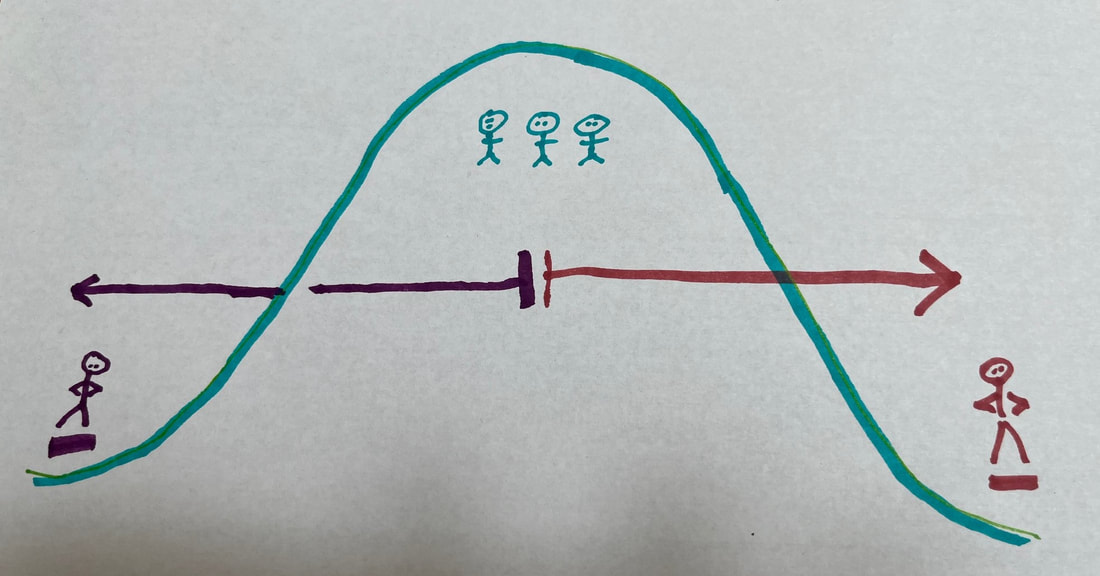|
“I act like an extrovert, but I think I’m really an introvert,” a friend told me. Many of us have used Myers-Briggs or similar instruments to define our personality types. Duke University psychology and neuroscience professor Mark Leary says scientists prefer to talk about traits instead of types. People are infinitely varied. Most personality traits occur not in opposing pairs but along a bell-shaped curve. Some people are very sociable, others just want to be left alone, but the vast majority of us—perhaps including my friend—fall somewhere toward the middle.
Winter, summer; good, evil; dark, light; rowdy, orderly. Is it human nature to prefer dualism over nuance? For some, clear-cut categories feel better than the ambiguity of a continuum. They make for catchier headlines and greater charisma. I wonder if binary thinking not only reflects but increases polarization. Take politics: Ordinary folk seem more moderate on average than fit precisely into progressive or conservative boxes. Take masculine and feminine personality traits: Are they inherent or socially constructed? Surely some of each. Young men’s and women’s hormones tilt the former to apply physical strength and the latter to bond with their babies, but plotting each on a bell-shaped curve would reveal huge variety and overlap. It needn’t be either/or.
0 Comments
Leave a Reply. |
AuthorI'm a historian who writes novels and literary nonfiction. My home base is Madison, Wisconsin. Archives
July 2024
|

 RSS Feed
RSS Feed